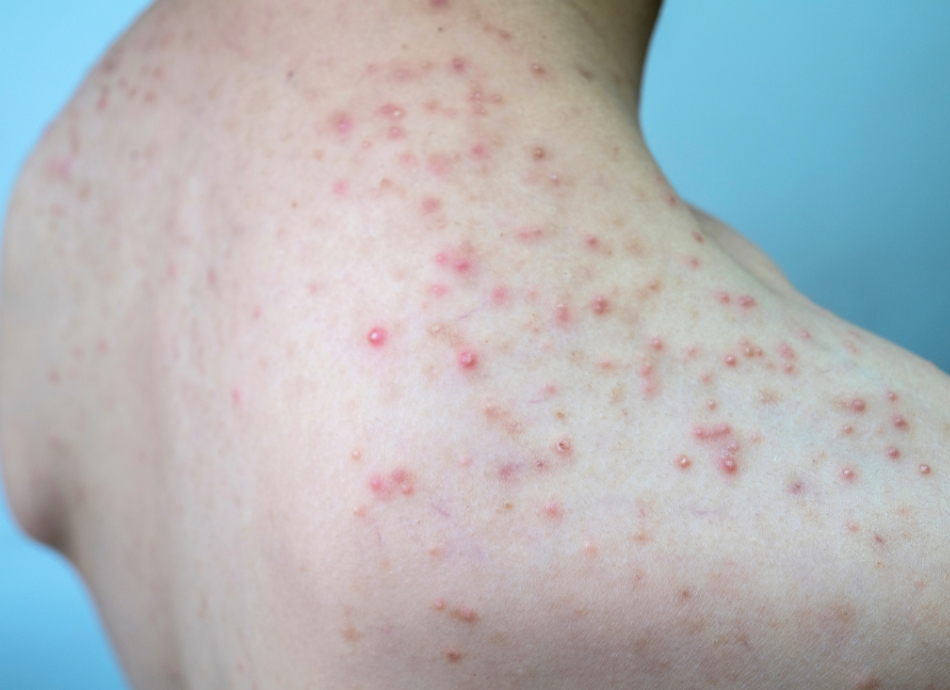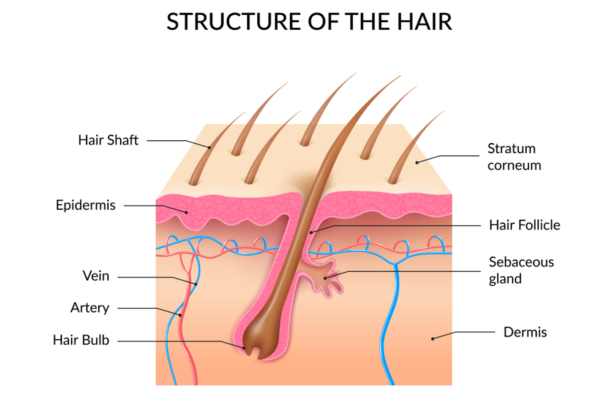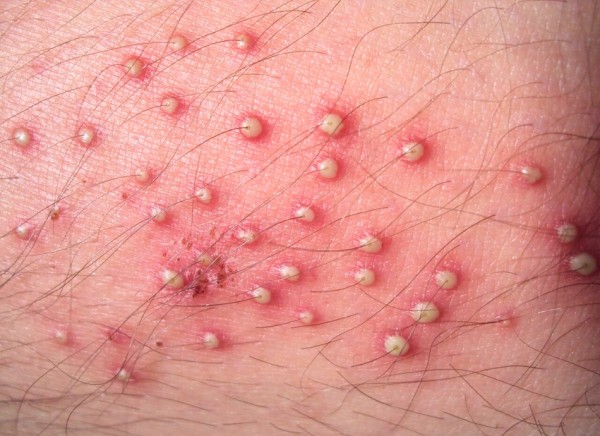Wishing everyone a safe and happy Christmas and New Year – Meri Kirihimete from the Healthify team.
Folliculitis
Key points about folliculitis
- Folliculitis is inflammation or infection of your hair follicles, which are the tiny openings in your skin where hairs grow from.
- It can be caused by infection, irritation, blocked pores or some medications or skin diseases.
- It often looks like a rash or acne and can be itchy, sore or have pus-filled spots.
- Mild cases usually clear up on their own with self-care.
- More severe or ongoing cases may need treatment with antibiotics or other medicines.
- Good hygiene, gentle hair removal, and avoiding tight clothes can help prevent it.

Folliculitis is when the small openings in your skin where hairs grow (hair follicles) become inflamed.

Image credit: Freepik
This can happen because of an infection, irritation, blocked pores or certain medications and skin diseases. It can affect any part of your body that has hair, but common areas include your buttocks, thighs, back, chest, face, and scalp.
It can be mild and go away on its own, or it can become more serious and need medical treatment.
Conditions such as acne and rosacea are forms of folliculitis.
Folliculitis happens when hair follicles become damaged or blocked. This can be caused by:
- bacterial infection – often from Staphylococcus aureus (staph) or Pseudomonas aeruginosa which is associated with spa pools
- fungal or yeast infections – especially on your scalp, upper back (in young people) or in warm, moist areas of your skin such as skin folds
- irritation – from hair removal such as shaving and waxing, tight clothing, or sweating
- blocked pores – from thick creams, oil-based products, plasters or dead skin
- certain medications – such as steroid creams or long-term antibiotic treatment
- other infections, such as herpes simplex virus or demodex mites.
You’re more likely to get folliculitis if you have diabetes, a weakened immune system, or are overweight.
Symptoms can vary, but common signs include:
- red, sore or itchy spots
- small pimples or pustules (pus-filled bumps)
- boils or abscesses if the infection is deep in the hair follicles
- a rash that looks like acne
- itching or burning, especially after shaving or sweating.
‘Spa pool folliculitis’ often appears a day or two after using a hot tub or pool and usually clears on its own.

Image credit: Da pacem Domine via Wikimedia Commons(external link)
Is it contagious?
Some types of folliculitis caused by bacteria or fungi can be passed on through shared towels, razors or close skin contact. You should always use your own personal care items and avoid sharing these when you have a rash.
When should I see a healthcare provider?
See your healthcare provider if:
- you have painful, spreading or pus-filled bumps
- you have a fever or feel unwell
- your rash doesn’t improve with self-care (see below)
- the rash keeps coming back
- you notice hair loss or scarring in the affected area.
Your healthcare provider can usually diagnose folliculitis from looking at your skin. They may ask about things like how often you shave, whether you’ve been in a spa pool recently, what medicines you use, or how much you tend to sweat. There aren’t any specific tests for folliculitis.
Your healthcare provider might take a swab, eg, if there’s pus present or if your condition doesn’t get better with self-care or treatment, to see if the folliculitis is caused by an infection.
Mild folliculitis often goes away within a week or two with simple self-care (see below).
If your symptoms don’t improve or are more severe, your healthcare provider may suggest:
- antibiotic creams or tablets for bacterial infections
- antifungal treatments for yeast or fungal infections
- steroid creams for inflammation or itch
- draining large abscesses if you have any of these
- laser hair removal if you have ongoing folliculitis caused by shaving.
If you have mild folliculitis, do these things to help relieve your symptoms.
- Wash the affected area with warm water and mild soap once or twice a day. Use a clean towel each time you wash.
- Use warm compresses to relieve pain or itching. You can apply a warm moist towel to the affected area 3 to 4 times a day for 15 to 20 minutes each time.
- Avoid shaving, plucking, waxing or scratching the area. You may need to avoid hair removal for a while after your symptoms have cleared.
- Wear loose, breathable clothing.
See below for other things you can do to help prevent folliculitis.
Here are some things you can do to reduce your risk of developing folliculitis.
- Use a clean, sharp razor and shave in the direction of hair growth or try an electric razor.
- Wash your skin before and after shaving and use shaving gel or cream.
- Avoid hot tubs or pools that aren’t well maintained.
- Wear loose-fitting clothing, especially in hot or humid weather and when you’re exercising.
- Avoid greasy or oil-based skin products, including moisturisers.
- Shower after exercise, swimming or using a spa pool.
- Don’t share personal care items such as razors or towels.
Most cases of folliculitis are mild and clear up without any scarring. However, deeper or repeated infections can cause:
- scarring or dark/light patches on the skin
- permanent hair loss in the affected area
- skin infections such as cellulitis (if bacteria spread).
If your symptoms keep coming back despite careful self-care or treatment, talk to your healthcare provider about long-term prevention.
References
- Folliculitis(external link) PatientInfo, UK, 2024
- How to treat and prevent folliculitis(external link) WebMD, US, 2023
- Folliculitis(external link) DermNet, NZ, 2014
Credits: Healthify editorial team. Healthify is brought to you by Health Navigator Charitable Trust.
Reviewed by: Dr Sara Jayne Pietersen, FRNZCGP, Auckland
Last reviewed:





